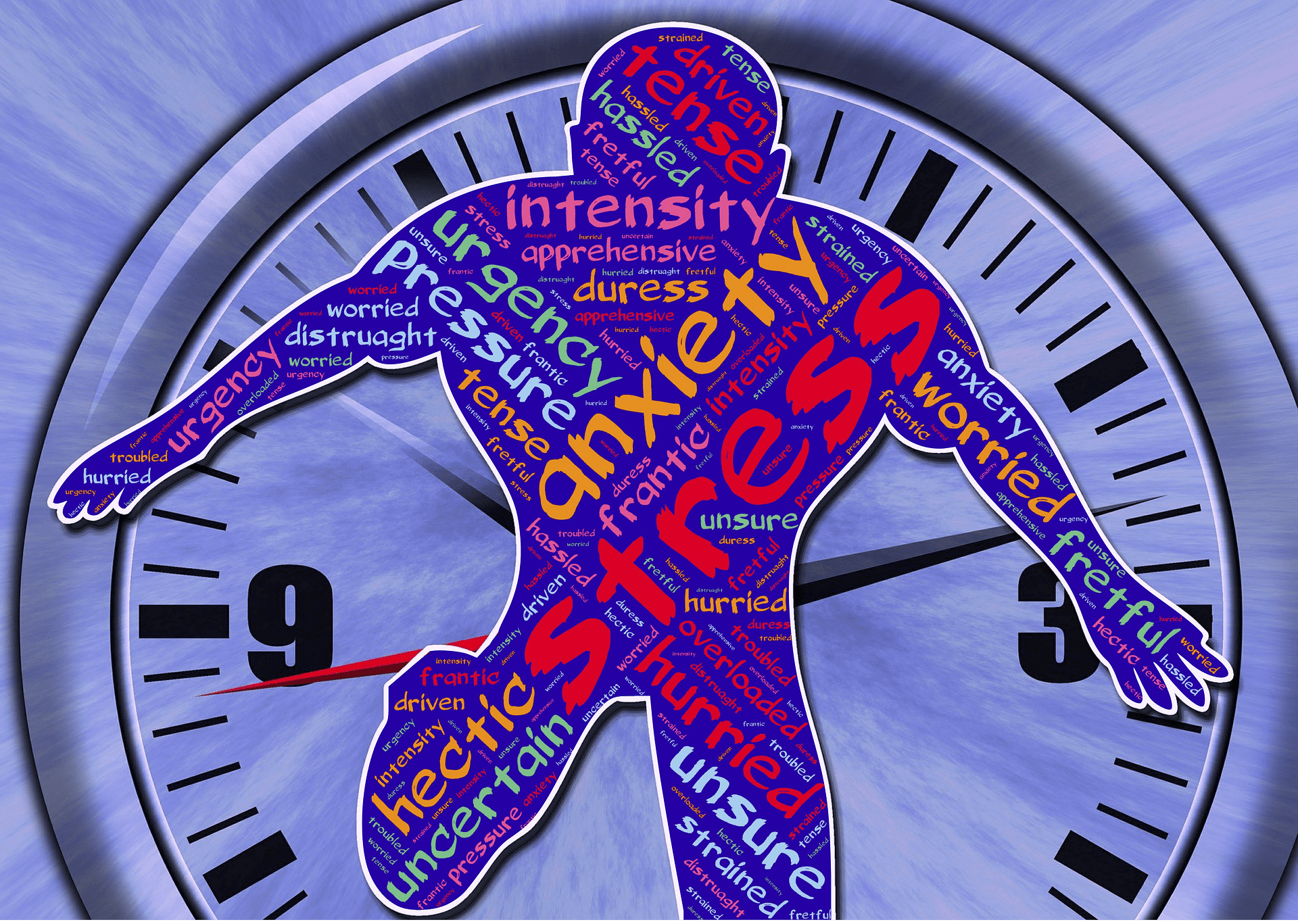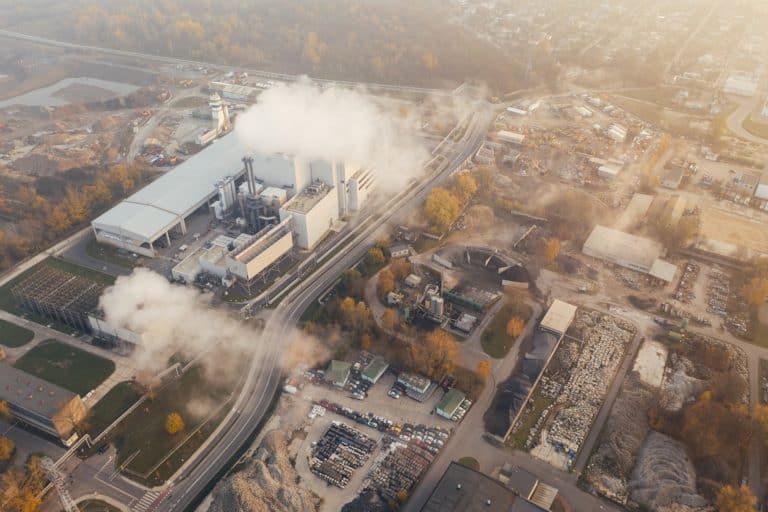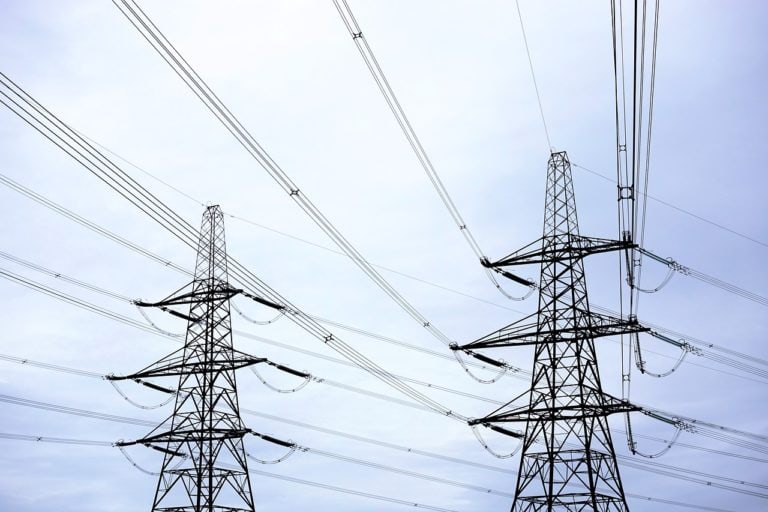Eco-anxiety: A catalyst for urgent climate action
As the effects of climate change become increasingly visible, both environmentally and psychologically, there has been a recent rise in climate anxiety (eco-anxiety of eco-grief).
This is an ecological version of anxiety disorder stemming from being confronted with the long-term impacts of global warming.
This experience is becoming all too common among individuals living in an uncertain and chaotic climate future.
But despite its serious implications for our mental health and well-being, it can also be an important driver behind meaningful and effective action to address global climate issues.
This blog post will explore what the issue encompasses. Beginning from its causes to potential solutions – with the overall goal of inspiring urgent action now more than ever before.
Definition of climate anxiety
Climate anxiety is a relatively new psychological condition that can be defined as the fear and distress experienced when exposed to climate change-related issues.
It has been described as a feeling of dread and helplessness in the face of climate change’s irreversible and unpredictable effects on nature, our lifestyle, and our future.
Eco-grief is caused by an individual’s perceived lack of control over climate-related events. This realization can lead to feelings of powerlessness, guilt, emotional exhaustion, sadness, anger, or even despair.
Additionally, climate change mitigation efforts often fail to keep up with current emissions trends. It tends to exacerbate public doubt about their own ability to take meaningful action on climate issues.
Evidence from studies and research
Case study 1
Recent studies have found climate anxiety to be on the rise, particularly among young people. A paper published in 2020 by a team from the Centre for Climate Change and Social Transformations (based at the University of Bath) surveyed 1,338 UK adults over two-time points (in 2020 and 2022) to reveal the prevalence of eco-grief.
The study found that over three-quarters of participants reported being worried about climate change. It also indicated that while only 4.6% reported climate anxiety in 2022. This was slightly higher than in 2020 when 4% reported this experience.
In addition, evidence suggests climate anxiety is more likely to be experienced by younger individuals. This also involves those with higher levels of generalised anxiety. More importantly, however, climate anxiety can also serve as a motivator for climate action.
Case study 2
The youth climate non-profit organisation Force of Nature has been leading the charge in studying eco-grief and its potential to inspire climate action. In a 2020 study, they surveyed over 1,400 people between the ages of 16 and 25 across four countries (Germany, France, the UK, and the US).
They found climate change-related distress was much higher among younger participants. The statistics showed 70% in the UK when compared to only 39% of those aged 40 or above.
The study also reported that eco-grief was linked to increased levels of activism; those who had this problem is more likely to express their concerns about climate change than those without eco-grief.
Case Study 3
A survey was conducted on 10 000 people (aged 16–25 years) in ten countries namely Australia, Finland, Brazil, France, Nigeria, India, the Philippines, the UK, Portugal, and the USA. 1000 participants were selected for the research from each country.

Results showed that over 50% of the respondents reported at least one of the following emotions: sadness, anxiety, anger, powerlessness, helplessness, and guilt.
In Australia, climate change-related stress or depression was found among almost a quarter of the participants. Brazil, Finland and France reported eco-grief to be on the rise.
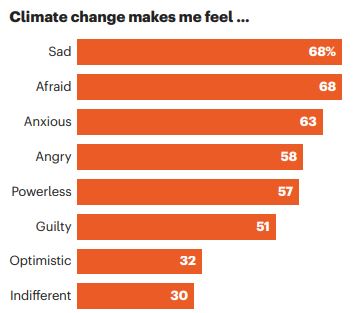
In India, climate change-induced distress among adults was found to negatively affect their lifestyle choices.
Nigeria revealed climate anxiety to lead to feelings of helplessness in the face of climate change’s destructive effects. Philippines documented climate change-induced psychological distress as one of the pressing issues experienced by young people today.
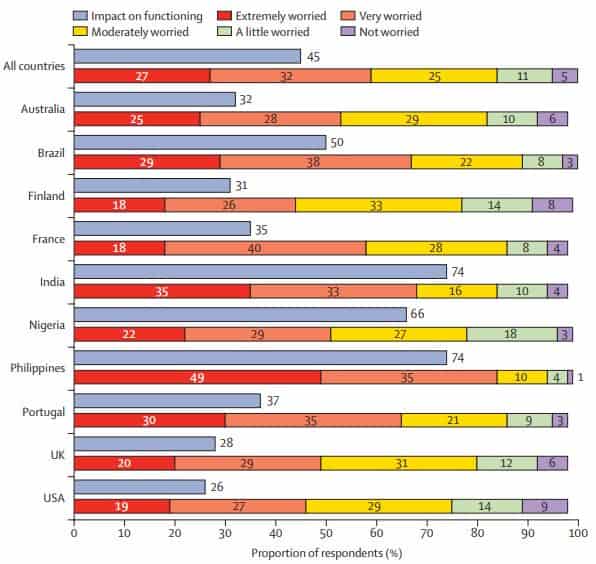
Portugal reported climate anxiety being linked with mental health conditions such as depression, panic attacks and somatic complaints.
Reasons for climate anxiety and its prevalence
Climate anxiety can stem from a variety of sources. This can include witnessing climate change’s direct impacts, feeling overwhelmed by the magnitude of climate change and its effects on people and ecosystems, or simply realizing that no one else is taking climate action.
It is more prevalent in younger people. This is mostly due to their increased access to information about climate change through social media and other digital platforms. Additionally, climate anxiety is linked to higher levels of generalised anxiety among individuals.
Media’s role in climate anxiety
A. Effects of media exposure to climate-related disasters
Media exposure is a significant factor in climate anxiety. Studies have reported that watching climate change news can increase feelings of distress, fear and helplessness among viewers.
Media outlets play an important role in making climate change visible to everyday audiences. While climate-related news stories can inform viewers about the severity of climate change, reports about climate disasters are likely to amplify climate anxiety symptoms.

This is because media coverage of extreme weather events and other climate impacts such as sea level rise often emphasize their catastrophic effects – leading to feelings of hopelessness and despair among those who view them.
B. Implications for organisations responsible for climate change communication
Organisations that are tasked with climate change communication should be aware of how climate-related news stories can affect the mental health of their audiences.
They should take steps to reduce the negative impacts of climate anxiety. This they can do by providing climate information in a way that is balanced and easily digestible to viewers.
In addition, climate communicators should provide viewers with practical solutions they can use to make a difference. Example can include advocating for policy reform or engaging in eco-friendly lifestyle practices.
This could help individuals feel empowered when taking action against climate change, rather than overwhelmed and helpless.
Managing Eco-Anxiety
One of the most distressing realities of our current ecological climate is the toll it takes on mental health. Eco-stress, is becoming increasingly widespread as has been demonstrated above.
Social and political action are important remedies for the climate crisis, but individuals can also take practical steps for coping with eco-anxiety.
We may feel helpless in the face of such an urgent and overwhelming global crisis, but our actions do have a tangible impact.
Connecting the dots will help us to understand how seemingly small everyday choices can make a big difference. This can be through agriculture, energy consumption, waste reduction, critical infrastructure improvements and more.
By looking at the entire workflow of climate-related activities that contribute to global warming and cascading environmental consequences, it is possible to identify opportunities for making individual changes that add up to exponential positive results on a systemic level.
It’s time we start connecting the dots and seeing our individual actions as one piece of the puzzle for enacting large-scale change.

Understanding that many people are in the same boat can also be a source of comfort. This is because if we work together, then solutions can be found.
Eco-Anxiety as a Catalyst for Action
A. Driving positive change through negative emotions
Although climate anxiety can be a negative experience, it can also lead to more positive outcomes. Research has shown climate anxiety is linked with increased climate action among individuals. This action can become the drive in reducing their carbon footprint and engaging in eco-friendly practices.
This has been attributed to eco-anxiety motivating people to take tangible steps towards climate change mitigation and adaptation.
The feeling of helplessness that climate anxiety brings can be transformed into motivation for making a difference on a personal level.
B. Redirecting climate anxiety symptoms into meaningful climate action
To effectively use climate anxiety as a catalyst for climate action, organisations especially the media should focus on helping individuals redirect their distress into positive behaviours that will make an impact.
This could involve providing practical climate solutions such as eco-friendly lifestyle practices or advocating for climate policy reform.
Additionally, climate communicators should pay due attention to the mental well-being of their audiences. They should provide resources that help in managing climate anxiety symptoms.
C. Emotion-reducing lifestyle changes unrelated to eco-anxiety
Individuals and organisations should also focus on providing climate solutions that do not rely solely on climate anxiety to be successful.
Many climate-friendly lifestyle practices such as eating a plant-based diet, using public transport and reducing waste are beneficial in terms of climate change mitigation without relying solely on climate anxiety to motivate individuals.
These small lifestyle changes can make a big difference in the climate fight. Organisations can also provide tangible actions that people can take without feeling overwhelmed by climate anxiety symptoms.
Recognition from experts and policymakers
Climate anxiety is quickly gaining recognition from experts and policymakers – with the mental health impacts of climate change now being widely recognised.
Mental health professionals are now advocating for climate-related interventions which can help reduce climate anxiety symptoms. Policymakers are beginning to incorporate climate-anxiety-related issues into their climate change policies.
This shows that climate anxiety has become an issue that requires immediate attention. This effort can be further strengthened to avoid its long-term psychological effects on individuals and communities.
This trend surely encourages individuals to take climate action more seriously. It also motivates victims to continue engaging in eco-friendly practices even after the initial climate anxiety has subsided.
With this in mind, action needs to be taken sooner rather than later in order to not only mitigate climate change but also to improve the mental well-being of those affected by it.
Final thoughts
Ultimately, climate anxiety is a serious issue that needs to be addressed in order to mitigate climate change.
By redirecting climate anxiety into meaningful action and providing tangible climate solutions, individuals can feel empowered to make a difference and help create a more sustainable future for generations to come.
With the recognition of climate anxiety now starting to gain momentum among experts, policymakers can start implementing effective climate policies that address both climate change mitigation and climate-anxiety-related issues.
Therefore, eco-anxiety should be taken seriously as it can be utilized as one of the most powerful catalysts for making a positive impact in the climate change campaign.

I’m a researcher, engineer, sustainability advocate and someone with a real passion for sports. If I am not in the laboratory or volunteering for some form of sustainability-driven initiatives, you can find me pretty much on the field either playing sports or watching my favourite teams and sportspersons on the TV. I strongly believe that through collaborative efforts and interdisciplinary approaches, we can create a more sustainable planet for all.
Contact
Have questions or need help? Please use the form to reach out .
